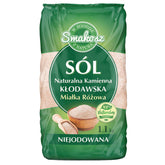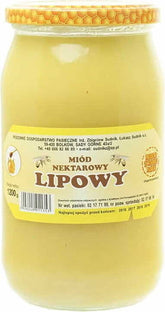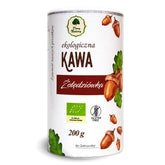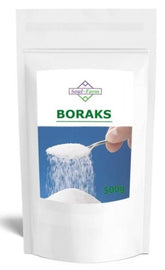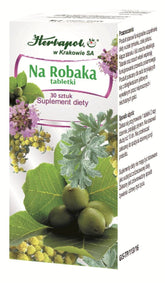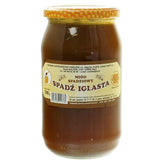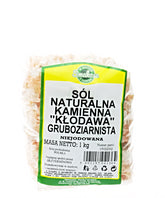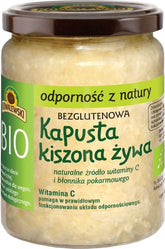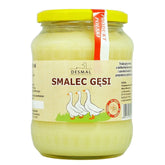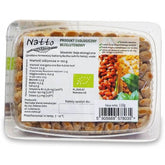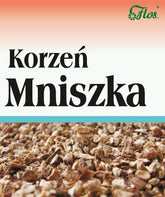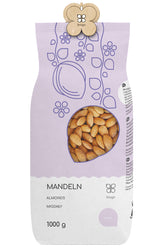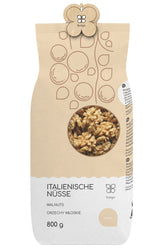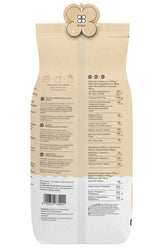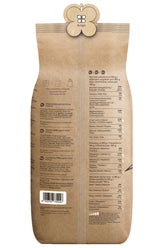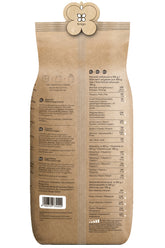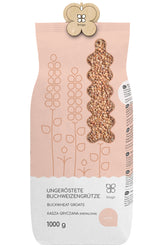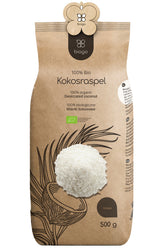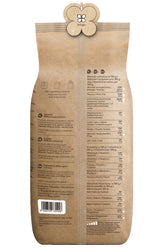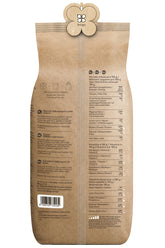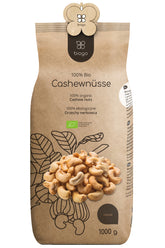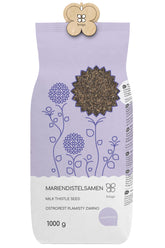Tempeh – how it differs from tofu and what properties it has
- What is tempeh and how is it made?
- What are the properties of tempeh?
- Using Tempeh in the Kitchen
- How is tempeh different from soybeans?
- Tempeh - Contraindications for consumption
Everyone has heard of tofu—a delicate curd made from soy milk. This Chinese food has become an indispensable part of our cuisine and is especially loved by vegetarians and vegans, as it provides an excellent source of protein in a meat-free diet. Although meat lovers also appreciate tofu, tempeh, which is also made from soybeans, is less well known. So let's review what it is and the difference between tempeh and tofu.
What is tempeh and how is it made?
Tempeh is a traditional Indonesian food product made from soybeans through a fermentation process. Its production involves soaking and dehulling whole soybeans, which are then partially cooked. The fermentation process takes place thanks to the use of the Rhizopus oligosporus fungus and lasts 24 to 36 hours. The fermented product has a hard consistency and a strong nutty aroma. The whole process creates a compact structure with visible soybeans.
What are the properties of tempeh?
The basic ingredient of this product is fermented soybeans. Tempeh is easily digestible, and its nutrients are easily absorbed by the body. This Javanese delicacy contains many valuable nutrients and, due to its high iron and protein content, is a great substitute for meat in a vegetarian diet. The iron contained in tempeh is involved in the formation of essential blood components, namely red blood cells and white blood cells. It is responsible for maintaining proper metabolism. It also transports oxygen and is an extremely important component of hemoglobin. Tempeh is also a valuable source of a fairly large amount of magnesium. Magnesium prevents unpleasant muscle cramps and the formation of gallstones. It also influences the proper functioning of the immune system, regulates body temperature, improves bowel function, and helps reduce premenstrual tension. This fermented soybean product is a very valuable source of vitamin B12, which supports the maturation of our red blood cells and also influences proper brain function. It also removes homocysteine, a compound that can contribute to the development of cardiovascular disease. Vitamin B12 deficiency can also lead to a significant drop in energy. In conclusion, tempeh is the source of:
- Proteins,
- Potassium,
- Sodium,
- Calcium,
- Phosphorus,
- Iron,
- Magnesium,
- Zinc,
- Copper,
- Vitamins: B1, B2, B6, B12,
- Niacin,
- Folates .
Using Tempeh in the Kitchen
By including tempeh in your daily diet, you can improve the condition of your bones, teeth, nails, and hair, support red blood cell production, improve cardiovascular function, and supplement iron and protein deficiencies, especially if you're following a meat-free diet with few animal products for various reasons. How do you use this delicacy in the kitchen? What do you eat and how do you prepare dishes with tempeh?
This Indonesian delicacy can be eaten without prior preparation in sandwiches and salads. Tempeh can be used to prepare a delicious, quick, filling, and healthy lunch or dinner. This product should be treated as a meat substitute, providing valuable iron and protein. It can be served with cereals such as cereals, rice, or bread, as well as with plenty of delicious vegetables. This makes a complete meal. Tempeh should be stored in the refrigerator (it can also be frozen). It is suitable for boiling, stewing, frying, baking, grilling, and marinating. During frying, you can add your favorite aromatic spices and herbs. During heat treatment, tempeh does not dry out, harden, melt, or crumble. Ground, seasoned, and fried in a pan with onions, it can be used as a filling for savory pancakes, dumplings, spring rolls, and even as a meat substitute for spaghetti Bolognese. Tempeh can also be added to moussaka or cabbage rolls instead of meat.
How is tempeh different from soybeans?
Since both tofu and tempeh are made from soybeans, you might be wondering what the difference is between them. Both are a good source of protein, but they differ in the way they are made, some of their nutritional values, and texture. Tempeh is made by fermenting previously soaked and cooked soybeans. Tofu, on the other hand, is not a fermented product. It is much softer, while tempeh is definitely firmer and more solid. The differences are also noticeable in the taste - tofu is delicate (basically, tofu has no flavor of its own, it gains it from the addition of herbs and spices), tempeh has a slightly nutty and robust flavor - especially in the smoked or fried variety, which is why tofu can be used in dessert recipes - e.g., in making tofu cheesecake, while tempeh is more of a dry product. Tofu and tempeh both contain iron and calcium, with tempeh being a better source of iron and tofu a better source of calcium. Compared to tofu, tempeh is also easier to digest.
Tempeh - Contraindications for consumption
Although tempeh is a highly nutritious product, it is contraindicated for consumption in cases of soy allergy. It is estimated that approximately 0.3% of people in Europe are allergic to this plant. Consuming it can lead to symptoms ranging from mild to severe multi-organ reactions. The most common symptoms are:
- abdominal pain,
- nausea,
- Diarrhea,
- Redness and burning of the skin, possibly hives,
Tempeh is a product with a unique flavor, an interesting texture, and contains many nutrients that have a positive effect on the proper functioning of our bodies. Even if we aren't vegetarians or vegans, it's worth reaching for this ingredient at least from time to time when preparing a healthy and nutritious meal. Its high protein content and nutrient richness make tempeh a unique product that perfectly complements vegetarian cuisine, providing essential nutrients while also providing a meat-like flavor and texture.
THE PUBLISHER'S CHOICE
Almonds 1 kg BIOGO
- €11,69
€13,75- €11,69
- Unit price
- / per
Walnuts 800 g BIOGO
- €8,65
€10,18- €8,65
- Unit price
- / per
Dried organic mango 400 g BIOGO
- €10,99
- €10,99
- Unit price
- / per
Dried White Mulberries 500 g ORGANIC
- €5,84
€6,87- €5,84
- Unit price
- / per
Dried organic figs 800 g BIOGO
- €30,12
- €30,12
- Unit price
- / per
Unpeeled buckwheat groats 1 kg BIOGO
- €2,81
€3,31- €2,81
- Unit price
- / per
Organic coconut flakes 500 g BIOGO
- €10,07
- €10,07
- Unit price
- / per
Organic oat flakes 600 g BIOGO
- €3,77
- €3,77
- Unit price
- / per
Organic cashew nuts 1 kg BIOGO
- €19,99
- €19,99
- Unit price
- / per
Milk thistle seeds 1 kg BIOGO
- €3,99
- €3,99
- Unit price
- / per

